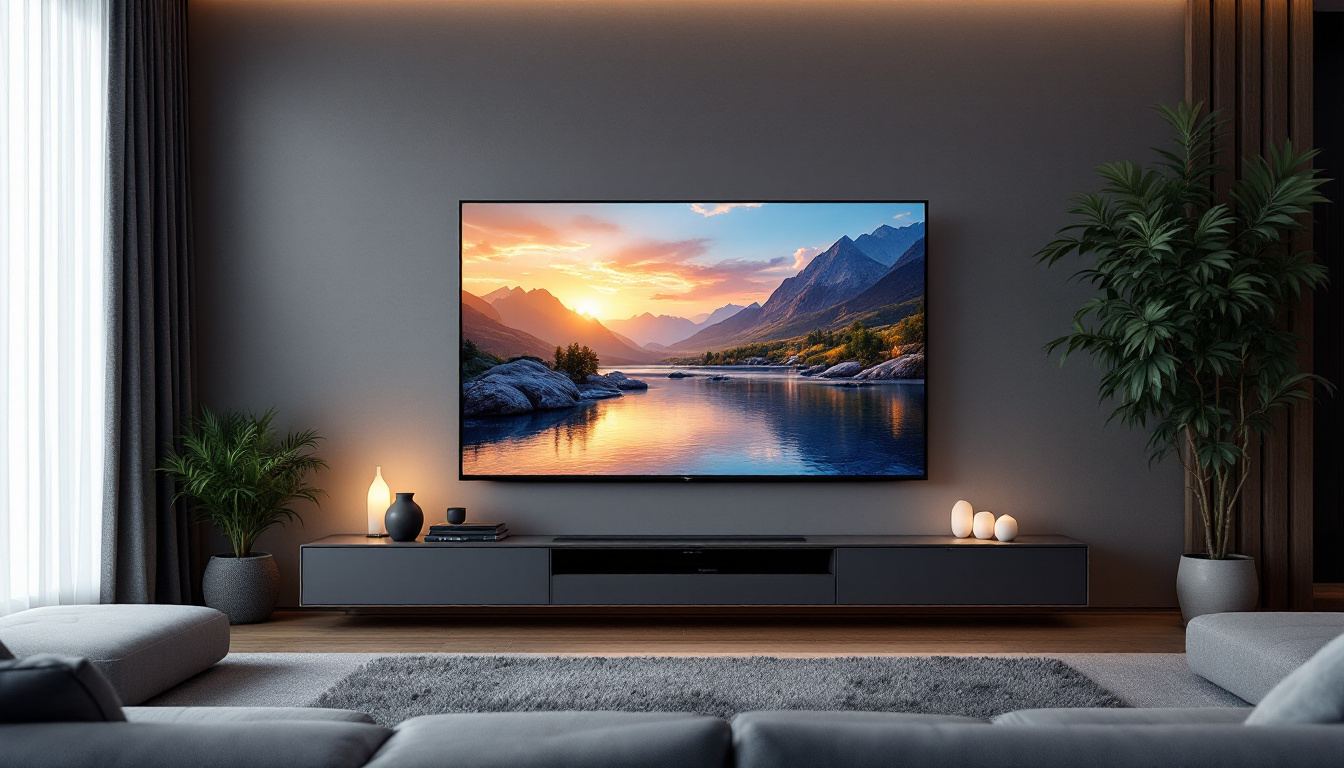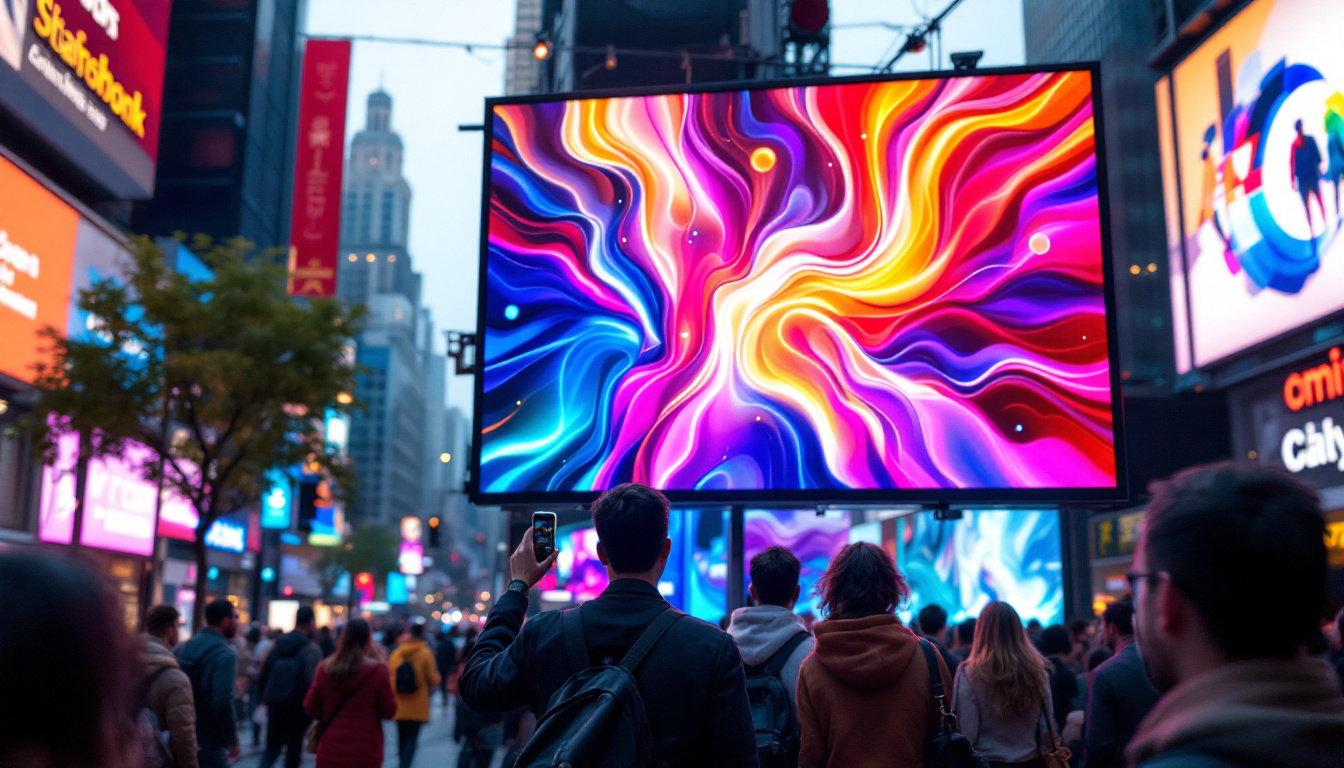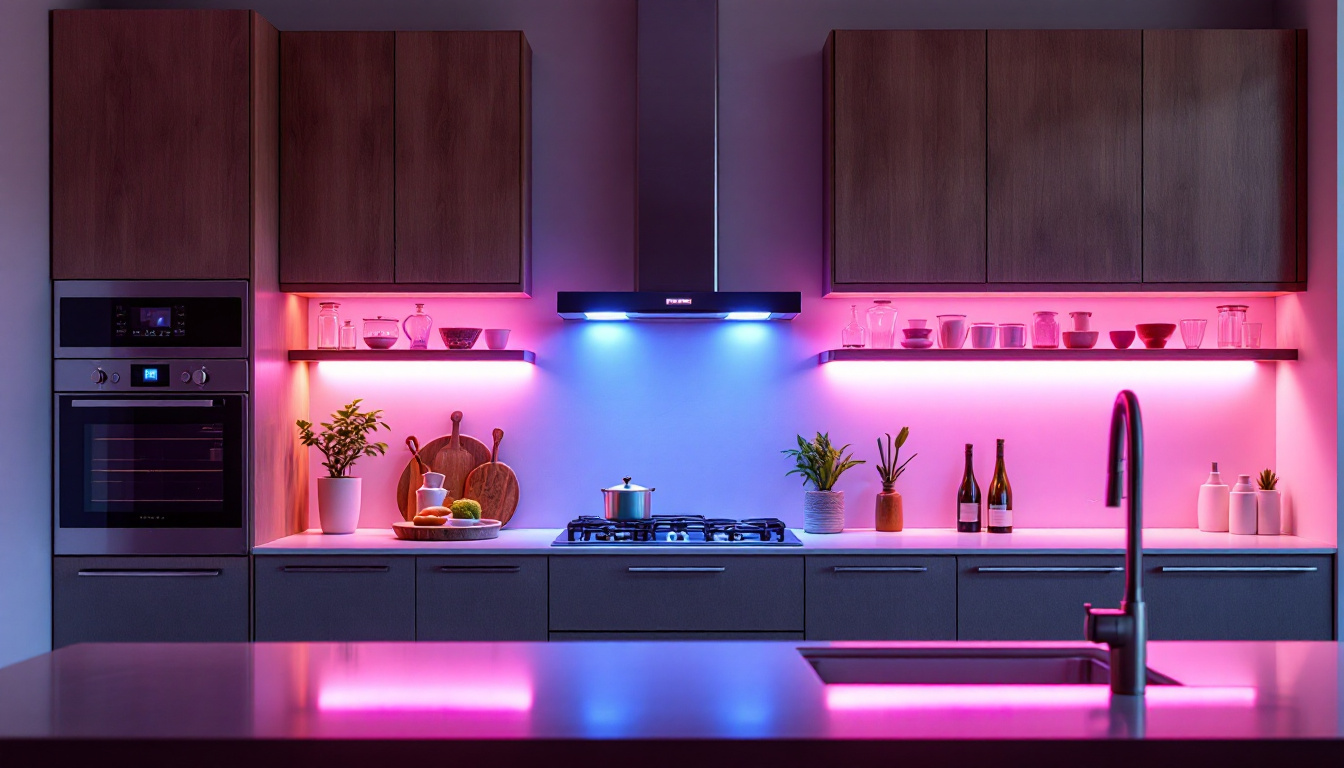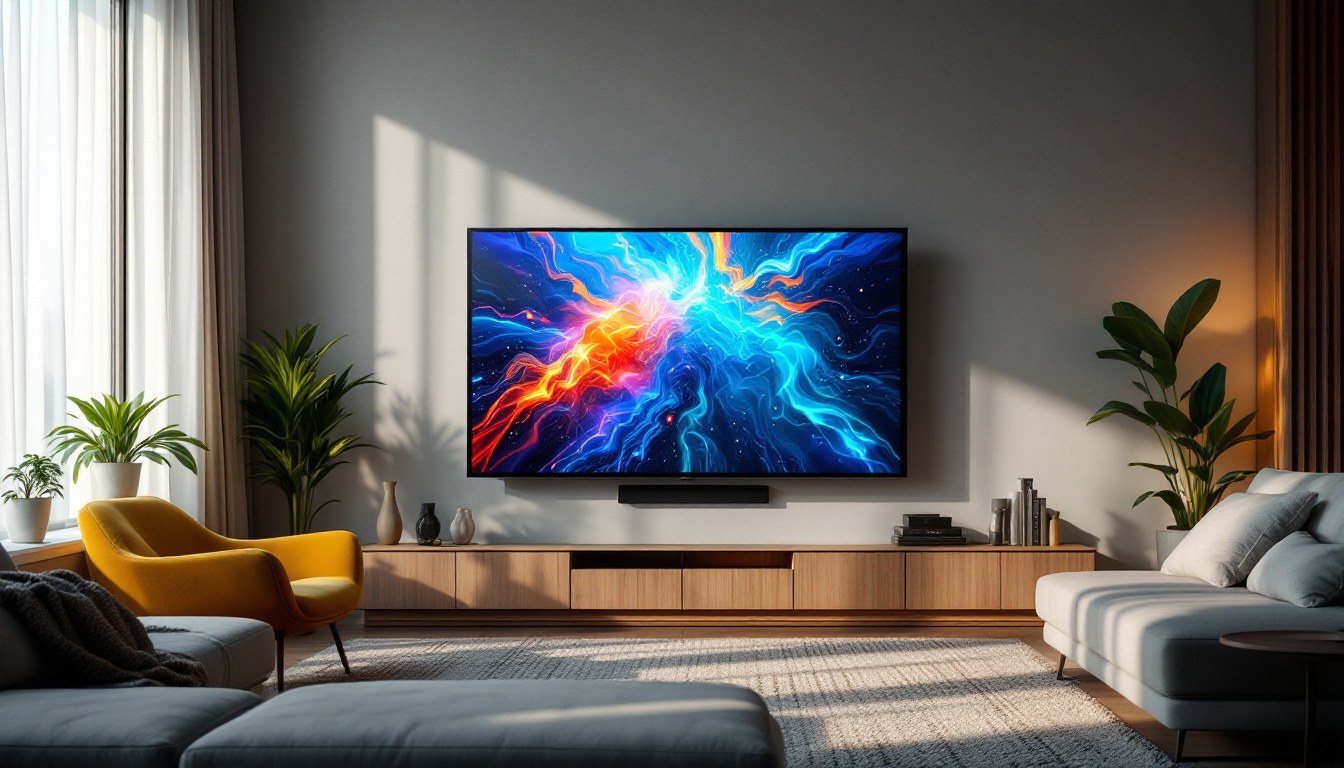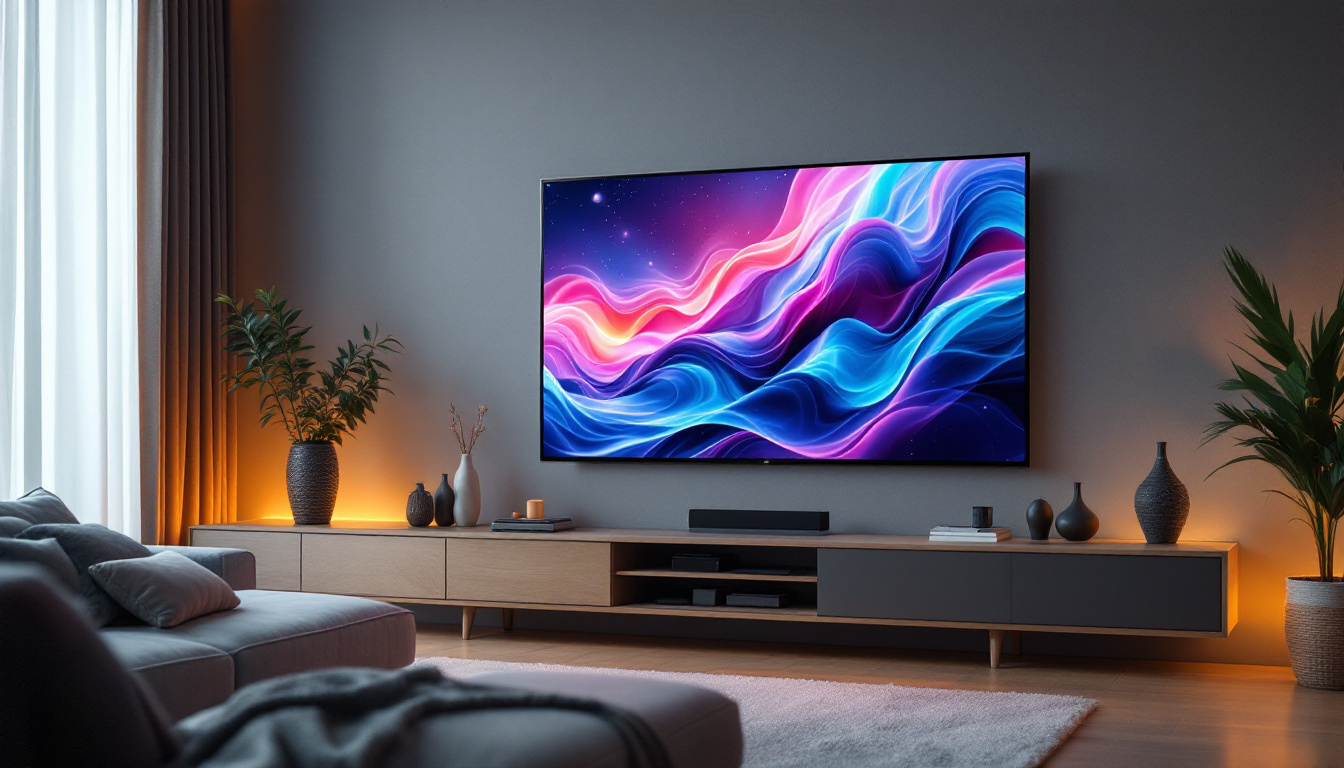In the ever-evolving world of television technology, understanding the differences between various display types can be a daunting task. Among these technologies, plasma TVs and LED displays have garnered significant attention, each with its unique characteristics and advantages. This article aims to demystify these two popular types of television displays, focusing on their functionalities, benefits, and the distinctions that set them apart.
Understanding Plasma TVs
Plasma TVs were once the pinnacle of home entertainment technology, especially during the early 2000s. Utilizing a unique technology that involves small cells filled with gas, plasma TVs produce vivid images and deep blacks, making them a favorite among cinephiles and gamers alike. Their ability to render fast-moving images with minimal motion blur made them particularly appealing for action-packed films and video games, where clarity and detail are paramount.
How Plasma Technology Works
At the heart of a plasma TV is a grid of tiny cells, each containing a mixture of noble gases and phosphor. When an electric current passes through these gases, they become ionized, creating plasma. This plasma then emits ultraviolet light, which excites the phosphor coating on the inside of the cell, producing visible light. This process allows for a wide color gamut and exceptional contrast ratios. The technology also enables plasma TVs to achieve deeper blacks than traditional LCDs, as the pixels can completely turn off in darker scenes, resulting in a more immersive viewing experience.
Advantages of Plasma TVs
One of the standout features of plasma TVs is their ability to display deep blacks and rich colors. This is primarily due to their self-emissive technology, which means each pixel can be turned on or off independently. This results in excellent contrast, making plasma TVs particularly well-suited for watching movies in dark environments. The rich color reproduction is enhanced by the ability of plasma screens to produce a more natural and lifelike image, which is crucial for film enthusiasts who appreciate the nuances of cinematography.
Additionally, plasma TVs generally have wider viewing angles compared to their LCD counterparts. This means that viewers can enjoy consistent color and brightness from various angles in the room, enhancing the overall viewing experience. This feature is especially beneficial for larger gatherings, where multiple viewers may be seated at different angles relative to the screen. Furthermore, many plasma models are known for their superior motion handling, allowing for a smoother viewing experience during fast-paced scenes, which is a significant advantage for sports fans and action movie lovers.
Limitations of Plasma TVs
Despite their impressive qualities, plasma TVs are not without drawbacks. One major limitation is their susceptibility to burn-in, a phenomenon where static images can permanently imprint on the screen if displayed for extended periods. This can be a concern for users who frequently watch channels with logos or play video games with static interfaces. To mitigate this issue, many manufacturers included features such as pixel shifting and screen savers, but these solutions are not foolproof and require users to be mindful of their viewing habits.
Moreover, plasma TVs tend to be heavier and consume more power than LED displays, which can be a consideration for those looking to save on energy costs or seeking a lightweight option for wall mounting. The increased power consumption is due to the technology’s need to maintain the ionization of gases within the cells, which can lead to higher electricity bills over time. Additionally, the heat generated by plasma screens can be significant, necessitating adequate ventilation in the viewing area to ensure optimal performance and longevity of the device.
Exploring LED Displays
LED displays, or Light Emitting Diode displays, have become the dominant technology in the television market today. They are essentially a type of LCD TV that uses LEDs to backlight the screen, offering a range of benefits that have contributed to their popularity.
How LED Technology Works
LED TVs utilize a liquid crystal display (LCD) panel that is illuminated by LED backlighting. This backlighting can either be edge-lit, where LEDs are placed around the perimeter of the screen, or full-array, where LEDs are distributed across the entire back of the panel. The liquid crystals manipulate the light to create images, resulting in bright and vibrant colors. The advancement of local dimming technology in full-array LED displays enhances this effect by allowing specific zones of the screen to dim or brighten independently, leading to improved contrast ratios and deeper blacks, which is particularly beneficial for watching movies in darker environments.
Advantages of LED Displays
One of the primary advantages of LED displays is their energy efficiency. They consume significantly less power than plasma TVs, making them a more environmentally friendly option. This efficiency also translates to lower electricity bills, which can be appealing for consumers. Furthermore, many LED displays are equipped with features like automatic brightness adjustment, which optimizes power consumption based on ambient light conditions, further enhancing their energy-saving capabilities.
LED displays are also thinner and lighter than plasma TVs, making them easier to mount on walls or fit into tight spaces. This sleek design has made them a popular choice for modern homes, where aesthetics play a crucial role in purchasing decisions. In addition to their physical attributes, LED displays often come with smart technology integration, allowing users to stream content directly from the internet, access apps, and even control their TV with voice commands, making them a versatile addition to any entertainment setup.
Limitations of LED Displays
While LED displays offer many advantages, they are not without their shortcomings. One notable issue is the potential for less impressive black levels compared to plasma TVs. Since LED displays rely on backlighting, achieving true black can be challenging, particularly in edge-lit models where light may bleed around the edges of dark images. This limitation can be particularly noticeable in scenes with high contrast, where the depth of black is crucial for an immersive viewing experience.
Additionally, LED displays can suffer from limited viewing angles. As the angle from which the screen is viewed changes, color and brightness can shift, which may detract from the viewing experience in larger rooms where viewers are seated at various angles. To combat this, some manufacturers have developed advanced panel technologies, such as IPS (In-Plane Switching), which aim to provide better color accuracy and wider viewing angles, making it easier for multiple viewers to enjoy the same content without significant degradation in quality. However, these enhancements often come at a higher price point, making it essential for consumers to weigh their options carefully when selecting an LED display that best fits their needs and viewing environment.
Comparing Plasma and LED Displays
When choosing between plasma and LED displays, several factors come into play, including picture quality, energy efficiency, and design preferences. Understanding these differences can help consumers make informed decisions based on their specific needs and viewing habits.
Picture Quality
In terms of picture quality, plasma TVs generally excel in contrast and color accuracy, especially in dark environments. The self-emissive nature of plasma technology allows for deeper blacks and a more immersive viewing experience. On the other hand, LED displays have made significant strides in recent years, with advancements in local dimming and quantum dot technology improving their overall picture quality.
Energy Efficiency and Longevity
Energy efficiency is a crucial consideration for many consumers. LED displays are typically more energy-efficient than plasma TVs, which can lead to long-term savings on electricity bills. Additionally, LED TVs often have longer lifespans, with many models lasting over 100,000 hours, whereas plasma TVs may start to degrade after about 60,000 hours of use.
Design and Aesthetics
In terms of design, LED displays have the upper hand due to their slim profiles and lightweight construction. This makes them easier to install and integrate into modern home décor. Plasma TVs, while still appealing to some, are bulkier and may not fit as seamlessly into contemporary living spaces.
Current Market Trends
The television market has seen a shift in consumer preferences over the years. With the advent of newer technologies such as OLED and QLED, the relevance of plasma TVs has diminished significantly. However, understanding these older technologies remains important for those interested in the evolution of display technology.
The Rise of OLED and QLED
OLED (Organic Light Emitting Diode) technology has gained traction due to its ability to produce stunning picture quality with perfect blacks and vibrant colors. Unlike both plasma and LED technologies, OLED displays do not require backlighting, allowing each pixel to emit its own light. This results in unparalleled contrast ratios and color accuracy.
Similarly, QLED (Quantum Dot LED) technology, developed by certain manufacturers, enhances LED displays by using quantum dots to improve color accuracy and brightness. This technology aims to combine the best features of both LED and OLED, offering consumers a compelling alternative.
Consumer Preferences and Buying Trends
As technology continues to advance, consumer preferences are shifting towards models that offer the best picture quality, energy efficiency, and design. Many consumers are now prioritizing OLED and QLED displays over plasma and traditional LED options. However, for budget-conscious buyers or those seeking a larger screen at a lower price point, plasma TVs may still hold some appeal in the second-hand market.
The Future of Television Technology
The future of television technology is exciting, with ongoing research and development paving the way for even more advanced displays. Innovations such as MicroLED and 8K resolution are on the horizon, promising to further enhance the viewing experience. As these technologies emerge, they will likely redefine consumer expectations and preferences in the television market.
Conclusion
In summary, both plasma and LED displays have their unique strengths and weaknesses, making them suitable for different types of viewers and environments. Plasma TVs are known for their superior picture quality and color accuracy, while LED displays offer energy efficiency and a sleek design. As technology continues to evolve, consumers are encouraged to stay informed about the latest advancements to make the best choices for their home entertainment needs.
Ultimately, the choice between plasma and LED displays will depend on individual preferences, viewing habits, and budget considerations. By understanding the nuances of each technology, consumers can enjoy a more fulfilling and immersive viewing experience in their homes.
Discover the Future of Home Entertainment with LumenMatrix
As you consider upgrading your home entertainment system, take the leap into the future with LumenMatrix’s innovative LED display solutions. With a commitment to revolutionizing visual communication, LumenMatrix offers an array of products from Indoor and Outdoor LED Wall Displays to specialized solutions like Vehicle LED Displays and LED Sports Displays. Whether you’re looking to create a cinematic experience in your living room with an All-in-One LED Display or aiming to make a bold statement with a Custom LED Display, LumenMatrix has the technology to bring your vision to life. Check out LumenMatrix LED Display Solutions today and transform the way you watch, play, and engage with your favorite content.

